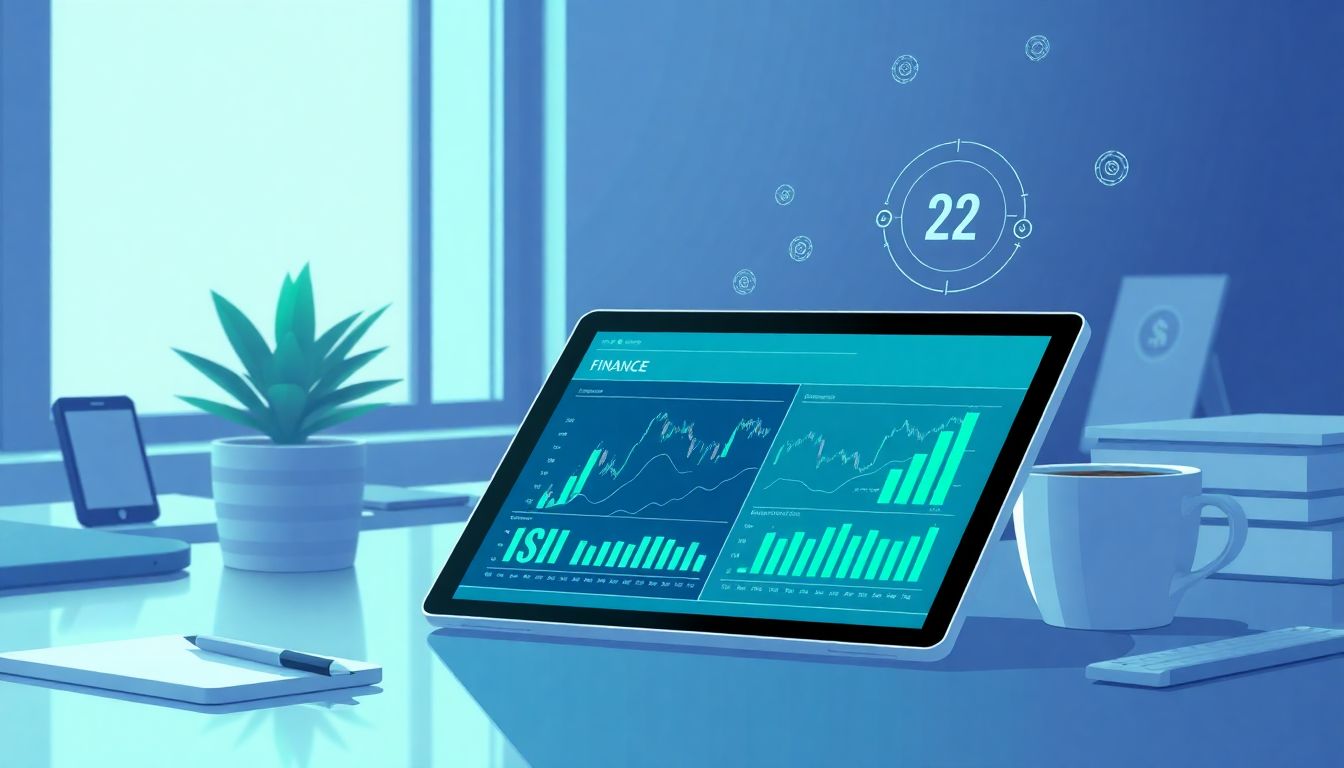If you’ve ever felt overwhelmed by the complexity of financial forecasting, you’re not alone. Many people struggle with predicting future trends and making sense of all those numbers. It can feel like trying to read a crystal ball that’s fogged up!
But what if I told you that there’s a powerful tool that can make financial analysis easier and more accurate? Stick around, and you’ll discover how ChatGPT can revolutionize the way you approach forecasting, providing insights and clarity that were once elusive.
From understanding its key features to exploring real-world applications, we’ll dive into how you can harness ChatGPT for smarter financial planning. Get ready to demystify those daunting forecasts!
Key Takeaways
- ChatGPT simplifies financial forecasting by using AI to analyze large data sets quickly, improving accuracy.
- The tool enhances financial analysis by recognizing trends, allowing businesses to make informed decisions.
- ChatGPT’s user-friendly interface and natural language processing make it accessible for all, not just finance experts.
- Automating tasks with ChatGPT saves time and reduces costs, facilitating strategic decision-making.
- Personalized insights help in crafting tailored financial strategies, thereby improving risk management.
- Ensure high-quality data input for accurate forecasts; otherwise, results may be misleading.
- Stay attentive to ethical considerations and regulatory compliance when using AI in finance.

How ChatGPT Can Improve Financial Forecasting and Analysis
ChatGPT offers a unique approach to financial forecasting by using AI-driven insights.
With its ability to parse large amounts of data quickly, it can enhance the accuracy of financial predictions.
This technology applies machine learning to recognize trends and patterns, making it invaluable for businesses.
Whether you’re a small startup or an established enterprise, leveraging ChatGPT could transform your financial analysis process.
By automating certain aspects of financial forecasting, you can free up valuable time for strategic decision-making.
Understanding Financial Forecasting and Its Importance
Financial forecasting refers to the process of predicting future financial outcomes based on historical data and analytics.
Understanding this concept is crucial as accurate financial predictions help in planning and resource allocation.
Companies rely on financial forecasting to navigate uncertainties in the market and make informed decisions.
The impact of effective forecasting on a business can be significant, as it can guide growth strategies and risk management.
Utilizing various financial analysis methods like quantitative and qualitative forecasting models can enhance decision-making.
Ultimately, successful financial forecasting leads to smarter, data-driven decisions that can steer a company towards sustainable growth.
Key Features of ChatGPT for Financial Analysis
ChatGPT’s natural language processing capabilities allow it to understand and interpret financial language effectively.
This makes it user-friendly, accessible, and efficient for both finance professionals and laypersons.
The integration of ChatGPT with existing financial tools enhances its effectiveness, providing deeper insights.
Its ability to offer personalized financial analysis means users can receive tailored recommendations based on specific data inputs.
By interpreting data and generating insights through conversational interfaces, ChatGPT minimizes the complexity often associated with financial reporting.
These features not only simplify financial processes but also empower users to make real-time adjustments based on up-to-date information.
Step-by-Step Guide to Using ChatGPT for Financial Forecasting
To get started with ChatGPT for financial forecasting, first, determine the key variables you need to analyze.
Next, set up your financial models clearly, ensuring all data inputs are consistent and accurate.
Craft effective prompts for ChatGPT to yield the most relevant insights. Here are some examples:
- “Analyze the historical sales data for the last five years and predict the revenue for the next quarter.”
- “Generate a forecast report based on the current economic trends and our previous two quarters’ performance.”
- “Provide insights on potential risks related to our projected cash flow over the next year.”
Once you receive output from ChatGPT, analyze it critically, keeping in mind the context of your business.
Refining your financial assumptions is crucial; consider adjusting the initial parameters for better accuracy.
Finally, compile actionable recommendations based on the insights to guide your financial strategies moving forward.

Real-World Applications of ChatGPT in Finance
ChatGPT has made its mark in several areas across the finance sector.
From investment analysis to risk management, it’s being used to streamline various processes.
For instance, in investment analysis, ChatGPT can assess historical data and market trends to suggest potential investment opportunities.
Another great application is automating market research, where it can scour vast databases for relevant news and insights.
This not only saves time but also ensures that analysts have the most recent information at their fingertips.
Sentiment analysis is yet another way ChatGPT assists finance professionals by gauging public sentiment towards stocks or economic policies.
Finally, it’s enhancing client communication by providing quick responses to queries and personalized insights, improving customer satisfaction.
Benefits of Using ChatGPT in Financial Planning
Implementing ChatGPT in financial planning comes with numerous advantages that can transform your business strategy.
One of the primary benefits is efficiency; it automates repetitive tasks, allowing financial analysts to focus on more complex decision-making.
This can lead to significant cost reduction, as businesses no longer need to dedicate as many resources to mundane analysis tasks.
Moreover, forecasts generated via ChatGPT are typically more accurate due to its ability to analyze data from different perspectives.
This, in turn, accelerates the decision-making process, giving companies a competitive edge.
Additionally, utilizing AI tools enhances financial transparency, as stakeholders have access to clearer and more comprehensible insights.
Lastly, tailored financial strategies generated by ChatGPT can help businesses manage risks more effectively, adapting to market volatility swiftly.
Limitations and Considerations for Using ChatGPT in Finance
While ChatGPT offers significant advantages, there are limitations and considerations to keep in mind.
One notable challenge is the potential inaccuracies in forecasting when the AI encounters unfamiliar data patterns.
This makes dependency on high-quality data absolutely essential; inaccurate data will lead to unreliable insights.
Ethical considerations also come into play, especially regarding data privacy and the responsible use of AI technology.
Regulatory compliance cannot be overlooked; financial firms must ensure that using AI does not violate any regulations.
Lastly, human oversight remains critical; while AI can enhance processes, final decisions should always involve human judgment to avoid pitfalls.
Best Practices for Creating Prompts for Financial Forecasting
Crafting effective prompts is crucial for maximizing the value you get from ChatGPT in financial forecasting.
Start by clearly defining the objectives of your query to ensure relevance.
Here’s a list of prompts that you can adapt or use directly:
- “Calculate projected expenses for the upcoming quarter based on historical trends and current budget allocations.”
- “Identify potential market risks over the next six months using our past performance data and current market conditions.”
- “Summarize key factors influencing our recent financial performance and suggest strategies for improvement.”
- “Compile a report comparing our last quarter’s performance to industry benchmarks.”
- “Predict changes in revenue based on a simulated 10% decrease in customer demand.”
Be specific in your queries to assist ChatGPT in delivering actionable insights.
Also, remember to utilize iterative feedback; refine your prompts based on the outputs you receive.
Lastly, align your prompts with your business goals to ensure that the insights generated are actionable and relevant.

Case Studies: Success Stories with ChatGPT in Financial Analysis
Several organizations have successfully integrated ChatGPT into their financial analysis processes, demonstrating its effectiveness.
For example, a mid-sized investment firm used ChatGPT to analyze market trends and enhance its portfolio management strategies.
By leveraging ChatGPT’s abilities, they increased their predictive accuracy, resulting in a 20% boost in investment returns.
Another notable case involved a financial consultancy that automated client reporting using ChatGPT to streamline their operations.
This led to reduced turnaround times for reports by 50%, allowing them to focus more on strategic consultation.
Additionally, a retail company applied ChatGPT to forecast cash flow, which noticeably improved their budgeting accuracy.
They reported greater alignment between forecasts and actual cash flow, enhancing their decision-making process.
These case studies highlight how diverse industries can integrate ChatGPT for tailored financial insights and improved outcomes.
Adopting such technologies provides measurable benefits and showcases the potential of AI in revolutionizing traditional financial practices.
Future Trends: The Role of AI in Financial Forecasting
The future of financial forecasting is likely to be significantly shaped by advancements in AI technology.
We can expect deeper integration of machine learning algorithms that enhance predictive analytics and automate complex analyses.
AI will be able to process vast amounts of data more efficiently, yielding faster and more accurate forecasts.
Moreover, as regulatory frameworks evolve, businesses will need to ensure that AI deployments comply with standards in financial reporting.
Collaboration between human analysts and AI will become more prevalent, optimizing decision-making and strategy formulation.
Additionally, we might see AI-driven tools providing real-time insights and forecasts to adapt to market changes swiftly.
Emerging technologies, including blockchain and advanced data analytics, will also find their way into financial forecasting, further refining accuracy.
As industries adapt to these trends, a collective shift towards data-driven decision-making and personalized financial services is anticipated.
Staying ahead of these developments will be crucial for organizations looking to maintain a competitive edge in their forecasting efforts.
FAQs
ChatGPT can analyze vast datasets, identify trends, and generate insights that improve forecasting accuracy. Its ability to process natural language allows for better interpretation of qualitative factors affecting financial outcomes.
Using ChatGPT in financial planning offers enhanced data analysis, quicker insights, and the ability to simulate various scenarios. This leads to more informed decision-making and improved strategic planning.
ChatGPT may struggle with complex calculations, may lack real-time data integration, and can provide inaccurate outputs if prompts are poorly structured. Careful prompt design and validation are necessary for optimal use.
To create effective prompts, be specific, use clear language, and provide context. Include relevant data points and desired outcomes to enhance the relevance and accuracy of ChatGPT’s responses.
